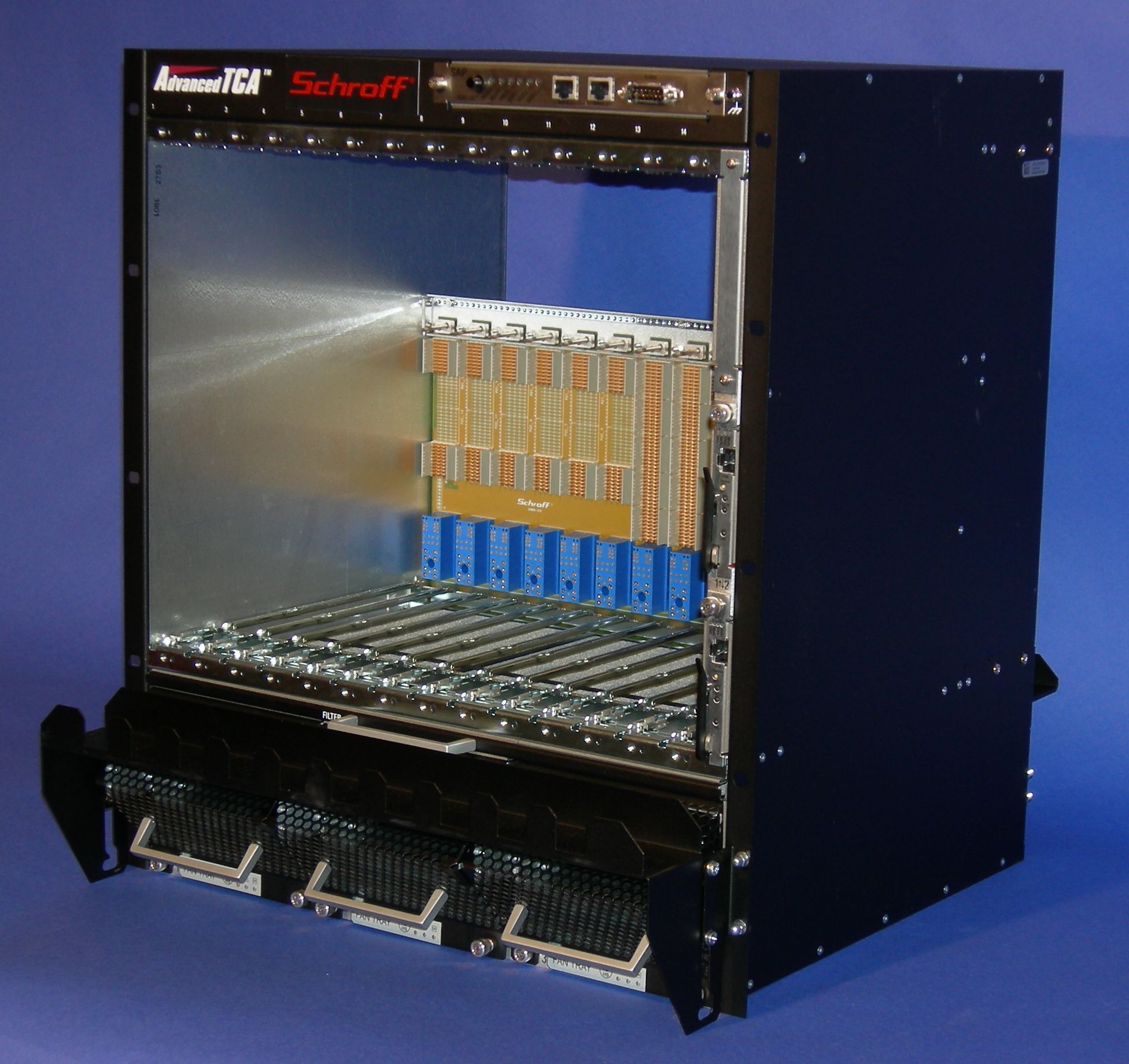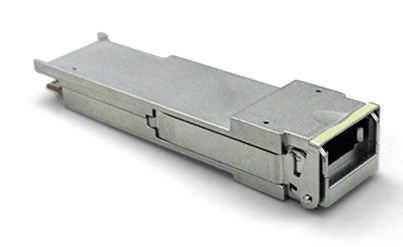|
Advanced Telecommunications Computing Architecture
Advanced Telecommunications Computing Architecture (ATCA or AdvancedTCA) is the largest specification effort in the history of the PCI Industrial Computer Manufacturers Group (PICMG), with more than 100 companies participating. Known as AdvancedTCA, the official specification designation PICMG 3.''x'' (see below) was ratified by the PICMG organization in December 2002. AdvancedTCA is targeted primarily to requirements for " carrier grade" communications equipment, but has recently expanded its reach into more ruggedized applications geared toward the military/aerospace industries as well. This series of specifications incorporates the latest trends in high speed interconnect technologies, next-generation processors, and improved Reliability, Availability and Serviceability (RAS). Mechanical specifications An AdvancedTCA board (blade) is 280 mm deep and 322 mm high. The boards have a metal front panel and a metal cover on the bottom of the printed circuit board to limit ... [...More Info...] [...Related Items...] OR: [Wikipedia] [Google] [Baidu] |
PICMG
PICMG, or PCI Industrial Computer Manufacturers Group, is a consortium of over 140 companies. Founded in 1994, the group was originally formed to adapt PCI technology for use in high-performance telecommunications, military, and industrial computing applications, but its work has grown to include newer technologies. PICMG is distinct from the similarly named and adjacently-focused PCI Special Interest Group (PCI-SIG). PICMG currently focuses on developing and implementing specifications and guidelines for open standards-based computer architectures from a wide variety of interconnects. Background PICMG is a standards development organization in the embedded computing industry. Members work collaboratively to develop new specifications and enhancements to existing ones. The members benefit from participating in standards development, gain early access to leading-edge technology, and forging relationships with thought leaders and suppliers in the industry. The original PICMG ... [...More Info...] [...Related Items...] OR: [Wikipedia] [Google] [Baidu] |
Ethernet
Ethernet () is a family of wired computer networking technologies commonly used in local area networks (LAN), metropolitan area networks (MAN) and wide area networks (WAN). It was commercially introduced in 1980 and first standardized in 1983 as IEEE 802.3. Ethernet has since been refined to support higher bit rates, a greater number of nodes, and longer link distances, but retains much backward compatibility. Over time, Ethernet has largely replaced competing wired LAN technologies such as Token Ring, FDDI and ARCNET. The original 10BASE5 Ethernet uses coaxial cable as a shared medium, while the newer Ethernet variants use twisted pair and fiber optic links in conjunction with switches. Over the course of its history, Ethernet data transfer rates have been increased from the original to the latest , with rates up to under development. The Ethernet standards include several wiring and signaling variants of the OSI physical layer. Systems communicating over ... [...More Info...] [...Related Items...] OR: [Wikipedia] [Google] [Baidu] |
Simple Network Management Protocol
Simple Network Management Protocol (SNMP) is an Internet Standard protocol for collecting and organizing information about managed devices on IP networks and for modifying that information to change device behaviour. Devices that typically support SNMP include cable modems, routers, switches, servers, workstations, printers, and more. SNMP is widely used in network management for network monitoring. SNMP exposes management data in the form of variables on the managed systems organized in a management information base (MIB) which describe the system status and configuration. These variables can then be remotely queried (and, in some circumstances, manipulated) by managing applications. Three significant versions of SNMP have been developed and deployed. SNMPv1 is the original version of the protocol. More recent versions, SNMPv2c and SNMPv3, feature improvements in performance, flexibility and security. SNMP is a component of the Internet Protocol Suite as defined by the ... [...More Info...] [...Related Items...] OR: [Wikipedia] [Google] [Baidu] |
HTTP
The Hypertext Transfer Protocol (HTTP) is an application layer protocol in the Internet protocol suite model for distributed, collaborative, hypermedia information systems. HTTP is the foundation of data communication for the World Wide Web, where hypertext documents include hyperlinks to other resources that the user can easily access, for example by a mouse click or by tapping the screen in a web browser. Development of HTTP was initiated by Tim Berners-Lee at CERN in 1989 and summarized in a simple document describing the behavior of a client and a server using the first HTTP protocol version that was named 0.9. That first version of HTTP protocol soon evolved into a more elaborated version that was the first draft toward a far future version 1.0. Development of early HTTP Requests for Comments (RFCs) started a few years later and it was a coordinated effort by the Internet Engineering Task Force (IETF) and the World Wide Web Consortium (W3C), with work later moving t ... [...More Info...] [...Related Items...] OR: [Wikipedia] [Google] [Baidu] |
ATCA Shelf Manager , a radio telescope in New South Wales
{{disambig ...
ATCA may refer to: * Atça, a town in Turkey * Advanced Telecommunications Computing Architecture, a specification for communications equipment * Aid to the civil authority, military aid to the civil power * Alien Tort Claims Act, a U.S. statue on jurisdiction * All Tripura Chess Association, an Indian organisation * American Theatre Critics Association * Association of Turkish Cypriots Abroad * Australia Telescope Compact Array The Australia Telescope Compact Array (ATCA) is a radio telescope operated by CSIRO at the Paul Wild Observatory, twenty five kilometres (16 mi) west of the town of Narrabri in New South Wales, Australia. Its opening ceremony took place on ... [...More Info...] [...Related Items...] OR: [Wikipedia] [Google] [Baidu] |
10 Gigabit Ethernet
10 Gigabit Ethernet (10GE, 10GbE, or 10 GigE) is a group of computer networking technologies for transmitting Ethernet frames at a rate of 10 gigabits per second. It was first defined by the IEEE 802.3ae-2002 standard. Unlike previous Ethernet standards, 10 Gigabit Ethernet defines only full-duplex point-to-point links which are generally connected by network switches; shared-medium CSMA/CD operation has not been carried over from the previous generations Ethernet standards so half-duplex operation and repeater hubs do not exist in 10GbE. The 10 Gigabit Ethernet standard encompasses a number of different physical layer (PHY) standards. A networking device, such as a switch or a network interface controller may have different PHY types through pluggable PHY modules, such as those based on SFP+. Like previous versions of Ethernet, 10GbE can use either copper or fiber cabling. Maximum distance over copper cable is 100 meters but because of its bandwidth requirements, hig ... [...More Info...] [...Related Items...] OR: [Wikipedia] [Google] [Baidu] |
100 Gigabit Ethernet
40 Gigabit Ethernet (40GbE) and 100 Gigabit Ethernet (100GbE) are groups of computer networking technologies for transmitting Ethernet frames at rates of 40 and 100 gigabits per second (Gbit/s), respectively. These technologies offer significantly higher speeds than 10 Gigabit Ethernet. The technology was first defined by the IEEE 802.3ba-2010 standard and later by the 802.3bg-2011, 802.3bj-2014, 802.3bm-2015, and 802.3cd-2018 standards. The standards define numerous port types with different optical and electrical interfaces and different numbers of optical fiber strands per port. Short distances (e.g. 7 m) over twinaxial cable are supported while standards for fiber reach up to 80 km. Standards development On July 18, 2006, a call for interest for a High Speed Study Group (HSSG) to investigate new standards for high speed Ethernet was held at the IEEE 802.3 plenary meeting in San Diego. The first 802.3 HSSG study group meeting was held in September 2006. In June 2 ... [...More Info...] [...Related Items...] OR: [Wikipedia] [Google] [Baidu] |
IEEE
The Institute of Electrical and Electronics Engineers (IEEE) is a 501(c)(3) professional association for electronic engineering and electrical engineering (and associated disciplines) with its corporate office in New York City and its operations center in Piscataway, New Jersey. The mission of the IEEE is ''advancing technology for the benefit of humanity''. The IEEE was formed from the amalgamation of the American Institute of Electrical Engineers and the Institute of Radio Engineers in 1963. Due to its expansion of scope into so many related fields, it is simply referred to by the letters I-E-E-E (pronounced I-triple-E), except on legal business documents. , it is the world's largest association of technical professionals with more than 423,000 members in over 160 countries around the world. Its objectives are the educational and technical advancement of electrical and electronic engineering, telecommunications, computer engineering and similar disciplines. History Ori ... [...More Info...] [...Related Items...] OR: [Wikipedia] [Google] [Baidu] |
RapidIO
The RapidIO architecture is a high-performance packet-switched electrical connection technology. RapidIO supports messaging, read/write and cache coherency semantics. Based on industry-standard electrical specifications such as those for Ethernet, RapidIO can be used as a chip-to-chip, board-to-board, and chassis-to-chassis interconnect. History The RapidIO protocol was originally designed by Mercury Computer Systems and Motorola ( Freescale) as a replacement for Mercury's RACEway proprietary bus and Freescale's PowerPC bus. The RapidIO Trade Association was formed in February 2000, and included telecommunications and storage OEMs as well as FPGA, processor, and switch companies. Releases The RapidIO specification revision 1.1 (3xN Gen1), released in March 2001, defined a wide, parallel bus. This specification did not achieve extensive commercial adoption. The RapidIO specification revision 1.2, released in June 2002, defined a serial interconnect based on the XAUI physi ... [...More Info...] [...Related Items...] OR: [Wikipedia] [Google] [Baidu] |
PCI Express
PCI Express (Peripheral Component Interconnect Express), officially abbreviated as PCIe or PCI-e, is a high-speed serial computer expansion bus standard, designed to replace the older PCI, PCI-X and AGP bus standards. It is the common motherboard interface for personal computers' graphics cards, hard disk drive host adapters, SSDs, Wi-Fi and Ethernet hardware connections. PCIe has numerous improvements over the older standards, including higher maximum system bus throughput, lower I/O pin count and smaller physical footprint, better performance scaling for bus devices, a more detailed error detection and reporting mechanism (Advanced Error Reporting, AER), and native hot-swap functionality. More recent revisions of the PCIe standard provide hardware support for I/O virtualization. The PCI Express electrical interface is measured by the number of simultaneous lanes. (A lane is a single send/receive line of data. The analogy is a highway with traffic in both direc ... [...More Info...] [...Related Items...] OR: [Wikipedia] [Google] [Baidu] |
InfiniBand
InfiniBand (IB) is a computer networking communications standard used in high-performance computing that features very high throughput and very low latency. It is used for data interconnect both among and within computers. InfiniBand is also used as either a direct or switched interconnect between servers and storage systems, as well as an interconnect between storage systems. It is designed to be scalable and uses a switched fabric network topology. By 2014, it was the most commonly used interconnect in the TOP500 list of supercomputers, until about 2016. Mellanox (acquired by Nvidia) manufactures InfiniBand host bus adapters and network switches, which are used by large computer system and database vendors in their product lines. As a computer cluster interconnect, IB competes with Ethernet, Fibre Channel, and Intel Omni-Path. The technology is promoted by the InfiniBand Trade Association. History InfiniBand originated in 1999 from the merger of two competing des ... [...More Info...] [...Related Items...] OR: [Wikipedia] [Google] [Baidu] |




